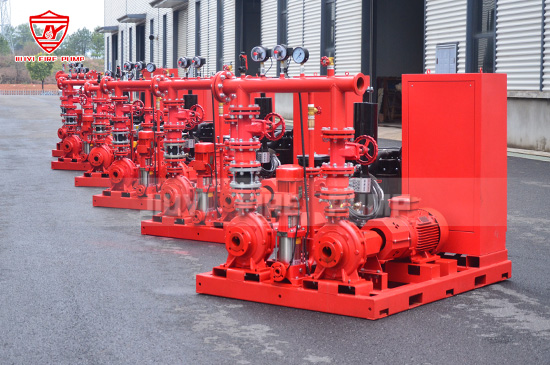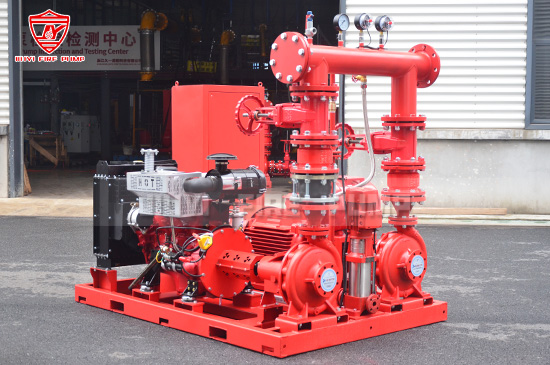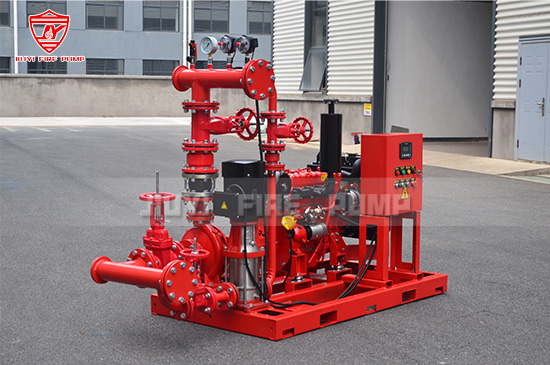Fire pump systems are essential for protecting lives and property in high-risk buildings and facilities. But simply installing a compliant fire pump system is not enough. You must also regularly test and document its performance to meet regulatory requirements and maintain the system’s operational integrity. Proper documentation not only proves that your system functions correctly but also provides vital records for inspections, insurance audits, and future troubleshooting.
In this article, we’ll explore the best practices for documenting fire pump performance tests, including methods, required data, compliance with NFPA 20 standards, and tips to streamline the process.

Fire pump performance testing is required to verify that the pump operates as designed—delivering the correct pressure and flow under varying conditions. But the value of testing is lost if it isn’t properly recorded.
Here are the key reasons to document fire pump testing thoroughly:
Compliance: Authorities Having Jurisdiction (AHJs) and insurance providers require proof of compliance with codes such as NFPA 20 and NFPA 25.
Safety Assurance: Accurate records show that the fire protection system will function in an emergency.
Preventive Maintenance: Trends in performance data help detect early signs of wear or failure.
Audit Trail: Serves as evidence in the event of a fire-related incident or legal inquiry.
There are three main types of tests performed on fire pumps, and each must be properly documented:
Acceptance Test
Conducted after installation to verify the pump meets design criteria.
Annual Performance Test
Required by NFPA 25 to verify continued performance under load.
Weekly or Monthly No-Flow Test
A churn test that ensures the pump starts and runs without water flow.
Each test type has different documentation requirements, which we will break down below.
To create a complete and useful fire pump performance record, you should include the following elements:
Building or facility name
Location and address
Date of the test
Type of test (acceptance, annual, weekly, etc.)
Testing company or personnel details
Fire pump identification (serial number, model, manufacturer)
Pump type (electric, diesel, vertical turbine)
Driver type and rating
Suction and discharge pipe sizes
Flow meter and pressure gauge specifications
Controller model and settings
Jockey pump and pressure maintenance system setup
Flow rates at:
No flow (churn)
100% rated flow
150% rated flow
Corresponding discharge and suction pressures
Net pump pressure at each flow point
Driver performance (e.g., RPM, voltage, amperage)
Automatic and manual start test results
Time taken for pump to reach full speed
Water tank or water supply condition
Abnormal noises or vibration
Leaks, corrosion, or obstructions
Discrepancies between expected and actual performance
Controller alarms or faults
Actions taken (e.g., cleaning, calibration)
Name and signature of technician or testing engineer
Date and time of completion
A final statement of compliance or non-compliance
Recommendations for repairs or adjustments

To ensure your documentation meets industry standards and remains useful long-term, follow these best practices:
Use forms based on NFPA 20 and NFPA 25 guidelines. These templates ensure consistency and help you capture all required details. You can create your own forms or use digital inspection platforms that provide templates.
Switching from paper to digital has many advantages:
Easier to store and retrieve records
Can integrate with building management or SCADA systems
Allows for photos, graphs, and videos
Supports trend analysis over time
Can be automatically backed up
Popular fire inspection software includes FireMate, BuildingReports, Inspect Point, and custom Excel or PDF templates.
Photos of the pump room, pressure gauge readings, controller screens, and nameplates can validate written data and assist in remote reviews by inspectors or engineers.
Ensure all gauges, meters, and testing equipment are recently calibrated and traceable to national standards. Record calibration dates as part of the documentation.
Compare data from current and past tests to identify signs of:
Pump degradation
Obstructed valves or piping
Electrical performance issues
Controller malfunctions
Creating visual charts for flow vs. pressure or amperage vs. flow is particularly helpful.
Below is a simplified example of a fire pump test report format:
| Field | Data |
|---|---|
| Facility Name | ABC Logistics Center |
| Location | Shanghai, China |
| Test Date | June 15, 2025 |
| Pump Type | Diesel Engine Fire Pump |
| Rated Flow | 750 GPM @ 100 PSI |
| Churn Pressure | 115 PSI |
| 100% Flow | 750 GPM @ 100 PSI |
| 150% Flow | 1125 GPM @ 82 PSI |
| Suction Pressure | 10 PSI |
| Net Pressure | 90 PSI |
| Controller Status | Auto Start Successful |
| Observations | No leakage; slight vibration |
| Technician | Li Wei, Better Pump Co. |
| Compliance | Pass (Meets NFPA 20) |
This format can be adapted for weekly, monthly, or annual reports.
NFPA 20 (Standard for the Installation of Stationary Pumps for Fire Protection) and NFPA 25 (Standard for the Inspection, Testing, and Maintenance of Water-Based Fire Protection Systems) provide documentation guidance:
NFPA 20 outlines requirements for acceptance testing.
NFPA 25 mandates annual testing and weekly/monthly maintenance logs, including specific data points.
Both standards require records to be maintained for a minimum of one year, though best practices recommend five years or more.
Incomplete Test Records: Missing flow or pressure data can render a report non-compliant.
Failure to Calibrate Gauges: Unreliable data leads to invalid test results.
Unclear Notes or Handwriting: If records aren’t legible, they’re as good as lost.
Neglecting Digital Backups: Paper logs are vulnerable to loss and damage.
Ignoring Follow-up Actions: Documenting issues without resolving them is dangerous.

Documenting fire pump performance tests is not just a compliance task—it’s a vital part of maintaining life safety systems. By using standardized forms, digital tools, calibration-verified instruments, and capturing complete performance data, you’ll ensure your fire pump system meets both regulatory requirements and the high expectations of your facility stakeholders.
A well-documented fire pump testing process protects not only the building—but also the people responsible for keeping it safe.